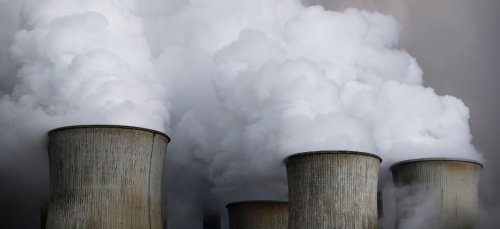The GOP tax bill seems to be on its way to becoming law, pending reconciliation of the differences between the House and Senate versions. Whatever the final form of the legislation, it is extremely likely that it will add over a trillion dollars to the deficit over a ten year window. Analysis by the Joint Committee on Taxation that takes into account the dynamic macroeconomic outcomes of the proposals still shows $1 trillion in new deficits. While there is concern about this among some Republicans, there are few ideas about how to overcome this problem. It seems unlikely that broadening the tax base further will cover the revenue loss reducing the top corporate tax rate from 35 to 20 percent. It also seems unlikely that conference negotiators will agree to a corporate rate very much above 20 percent, despite muddled signals to the contrary from the White House. Finally, the idea that tax cuts will pay for themselves lacks objective empirical support.
Whatever the final form of the legislation, it is extremely likely that it will add over a trillion dollars to the deficit over a ten year window.
The problem can be solved with a carbon tax paired with an expansion of the Earned Income Tax Credit (EITC).
A carbon tax is shorthand for a tax on emissions of carbon dioxide (or, in the case of fossil fuels, their carbon content before combustion) and other greenhouse gases. Such a tax is appealing because it serves the dual purpose of benefitting the environment and generating significant revenue to use to achieve other goals. According to a 2016 analysis by the Congressional Budget Office, a greenhouse gas tax could yield $977 billion in revenue over a 10-year period, nearly equal to the JCT deficit estimate. Our own work with colleagues estimates that a carbon tax starting at about $25 per metric ton of CO2, rising at 5 percent per year over inflation, would gross over $110 billion the first year and over $1 trillion over 10 years while reducing U.S. CO2 emissions by over 50 percent by 2040 relative to a business-as-usual emissions projection. The policy would also reduce harmful air pollutants like sulphur dioxide, mercury, particulate matter, and nitrogen oxides.
One concern with the carbon tax is that it is regressive, meaning lower income households bear a larger burden of the tax as a fraction of their income than higher income households do. However, good policy design can offset this regressivity. In a recent paper, we model how the revenues from a carbon tax could be used in part to fund an expansion of the EITC, thus using a regressive tax to fund a progressive benefit. The EITC program has bipartisan support, is well-targeted to low- and moderate-income households, and is shown to strengthen work incentives. The EITC is a powerful anti-poverty tool, credited with reducing the number of people in poverty by 16 percent, and the number of children in poverty by 30 percent. Including a carbon tax and an EITC expansion in the tax bill could serve three goals. One, the revenues from the carbon tax could fund the EITC expansion and fill the deficit hole. Second, the bill would go much further in directly helping working families, and third, it could get Republicans out of the corner they have painted themselves into on climate change. Evidence suggests that any carbon tax large enough to fill the GOP’s deficit hole would be large enough to deliver on the U.S. commitment to the Paris climate agreement without a single additional regulatory measure.
The current version of the bill does help working families by expanding the Child Tax Credit to either $1,600 in the House bill or $2,000 in the Senate bill, relative to $1,000 today. However, the Child Tax Credit does nothing to incentivize work and is only partially refundable. This means that many low-income households, which don’t currently owe any federal taxes, benefit very little from this tax credit program. In contrast, the EITC is fully refundable and is therefore far more helpful to needy families. The EITC expansion, including to low-income childless workers, should receive priority over the CTC expansion.
There are many good economic reasons to support a carbon tax. Detailed academic and policy research and modeling shows how a carbon tax could reduce greenhouse gas emissions, how it could be administered, how much revenue it would raise, and the best possible uses of the revenues. We discussed in an earlier paper the idea to pair a corporate tax rate reduction with a carbon tax, and we estimated the likely distributional implications of such a tax swap. That study and our newer paper both found that about 11 to 19 percent of the carbon revenues would keep the poorest 20 to 40 percent of low-income families whole on average after a carbon tax. That would still leave at least 80 percent of revenues to cover the reduction in other taxes.
Now it seems there are good political reasons to get behind a carbon tax. Republicans have made tremendous progress in pushing through cuts in corporate and other taxes. It’s time to fill the gaps they’ve left behind with a carbon tax and greater benefits for working families.






Commentary
Fill the gaps in the tax bill with a carbon tax and expanded benefits for working families
December 8, 2017